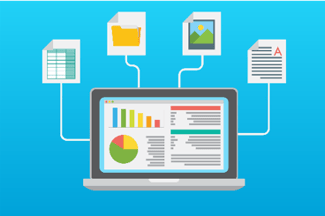Understanding FDA’s Least Burdensome Provisions
First codified in the Food and Drug Administration Modernization Act of 1997, least burdensome provisions have guided all of FDA’s regulatory work ever since. The provisions impact everything from the development of new guidance documents to adjusting and improving upon existing approval pathways, and so on. Particularly with the agency’s bolstered commitment to addressing digital health products in the coming years, the least burdensome approach has never been so important. But how does FDA actually define “least burdensome” exactly, and how do they enact it?
New guidance released in February 2019 sheds light on these questions and positions the agency’s approach. Understanding FDA’s least burdensome provisions is crucial for determining how your life science organization approaches any regulatory communication.
How FDA Defines Least Burdensome
When it comes to understanding the least burdensome approach, starting at what information FDA looks for in any given exchange is key. FDA intends to look for (and request, when applicable) the minimal amount of information necessary to manage whatever regulatory action is being undertaken. This includes information for premarket reviews, inspections and audits, regulation and guidance development, and so on. Factors that influence how FDA defines least burdensome include:
- What information is needed
- How it is generated/provided
- When it should be generated/provided to FDA
By considering these factors, regulators can determine what the least burdensome approach is for any regulatory action.
It’s also important to understand how the least burdensome approach impacts regulators. Least burdensome provisions, on their surface, appear to be geared toward removing burden only from industry. In reality, it’s a two-way street; FDA intends to minimize their own burden as well. This streamlines their critical regulatory work and allows a simpler framework for any action they take.
7 Guiding Principles
In this new guidance, FDA outlines seven distinct principles that guide their least burdensome approach. These principles impact both regulators and industry throughout product life cycles and attempt to optimize all efforts undertaken throughout regulatory interactions.
1. Requesting the minimum information necessary
The first principle of the least burdensome approach lays out FDA’s intention to request only the minimum information needed in order to properly handle any regulatory concern. This, like the other guiding principles, applies to any discussions, issues, and questions between industry and regulators throughout the product life cycle.
 2. Industry submissions should be least burdensome
2. Industry submissions should be least burdensome
To facilitate expedited and optimized reviews, life science organizations should leverage least burdensome approaches to any FDA submissions and correspondence. In the materials sent during these exchanges, information should be well-organized, related to the regulatory concern at hand, concise, and reference relevant FDA guidance documents where applicable.
3. Efficient means for resolution
In order to streamline regulatory actions, FDA employs approaches that are formal yet timely and flexible, dependent upon the needs of both themselves and industry. Doing so allows them to make sure the time, effort, and resources of organizations are properly taken into account during any period of regulatory interaction.
4. The right information at the right time
 In order to reduce burden from all stakeholders in any regulatory interaction, FDA wants to ensure only necessary information is exchanged and communicated. This principle of the least burdensome approach is critical for industry to keep in mind when interacting with FDA, as inappropriate or irrelevant information can slow down both your organization and regulators.
In order to reduce burden from all stakeholders in any regulatory interaction, FDA wants to ensure only necessary information is exchanged and communicated. This principle of the least burdensome approach is critical for industry to keep in mind when interacting with FDA, as inappropriate or irrelevant information can slow down both your organization and regulators.
Included in this guiding principle is a provision for considering data collected from the postmarket environment when possible. FDA will allow the use of information gleaned from legally marketed predicate devices—or other means—in lieu of data generated during premarket development. For example, FDA would count and consider performance data for a legally marketed predicate in evaluating a submission, rather than asking for it to be generated. Because regulators would have familiarity with the existing product and its data, rework and reevaluation can be avoided, saving time and resources for all stakeholders.
5. Accounting for technology
 When using the least burdensome approach, regulators intend to tailor their actions to the technology under assessment—something absolutely crucial as technological change continues to accelerate and more digital health technologies make their way to market. This principle of the least burdensome approach gives FDA greater flexibility in how they address technology, letting them keep up with its rapid pace. Rather than a one-size-fits-all approach, they can design their regulatory approaches based on:
When using the least burdensome approach, regulators intend to tailor their actions to the technology under assessment—something absolutely crucial as technological change continues to accelerate and more digital health technologies make their way to market. This principle of the least burdensome approach gives FDA greater flexibility in how they address technology, letting them keep up with its rapid pace. Rather than a one-size-fits-all approach, they can design their regulatory approaches based on:
- Unique innovation cycles for new technologies
- Needs for generating evidence
- Timely access for patients
6. Leveraging data from other sources
FDA’s allowance of data collection from postmarket environments and other sources helps significantly reduce burden for all stakeholders. With this least burdensome principle, FDA allows use of data and decisions from other regulatory authorities for life science industries—domestic and foreign. As long as gathering and providing that information is feasible, appropriate, and relevant to the regulatory concern in question, FDA and industry alike can apply that information in their interactions.
7. Convergence and harmonization with international standards
Harmonization with international standards is a constant project for FDA. For example, FDA will begin to move forward with harmonization of existing quality management system (QMS) regulation with ISO 13485:2016 starting in 2019. This is important for both foreign and domestic life science organizations; foreign submissions to US markets become simpler while domestic ones are aligned to international bodies that adopt ISO 13485 as their QMS regulation. By taking a more global approach to regulatory activities, FDA can be positioned to enact dynamic, thorough action throughout the industry and the life cycles of life science products.
About Cognition Corporation
At Cognition, our goal is to provide medical device and pharmaceutical companies with collaborative solutions to the compliance problems they face every day, allowing the customer to focus on their products rather than the system used to create them. We know we are successful when our customers have seamlessly integrated a quality system, making day-to-day compliance effortless and freeing up resources to focus on product safety and efficacy.




